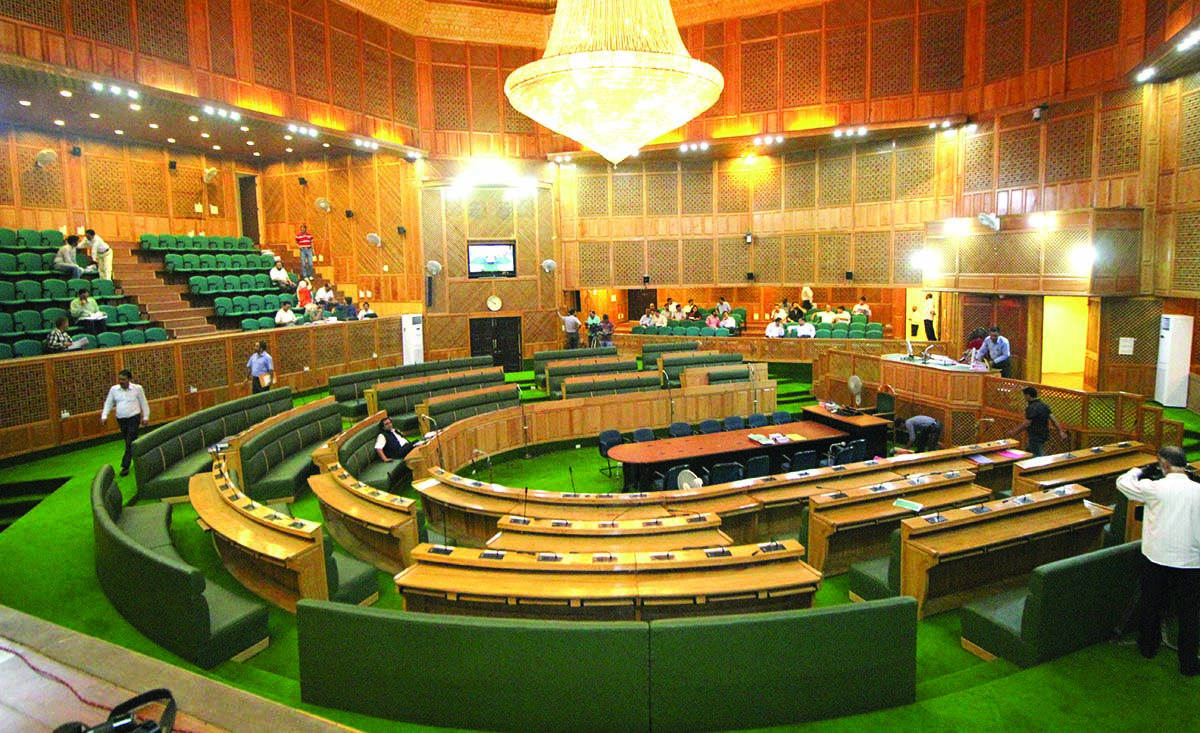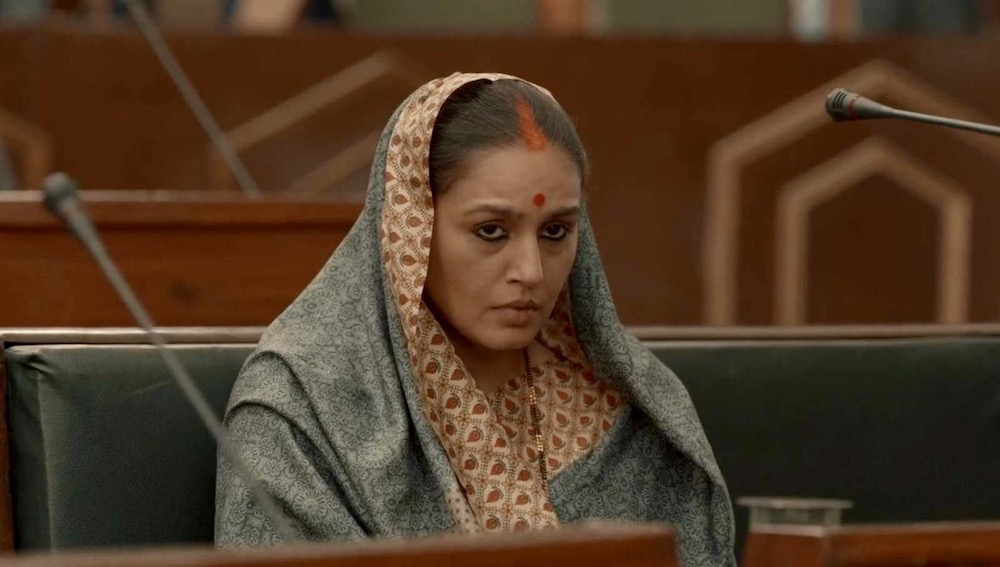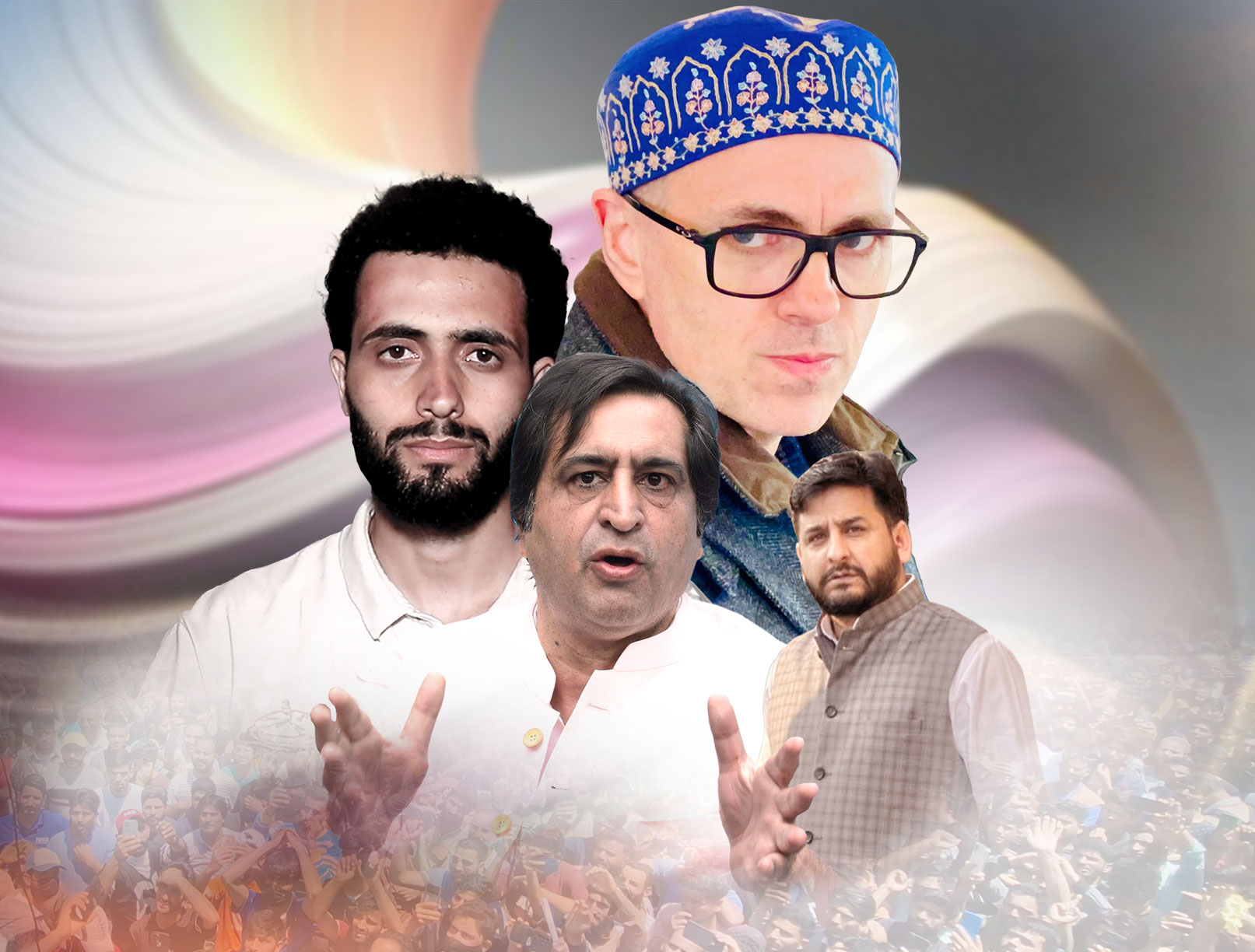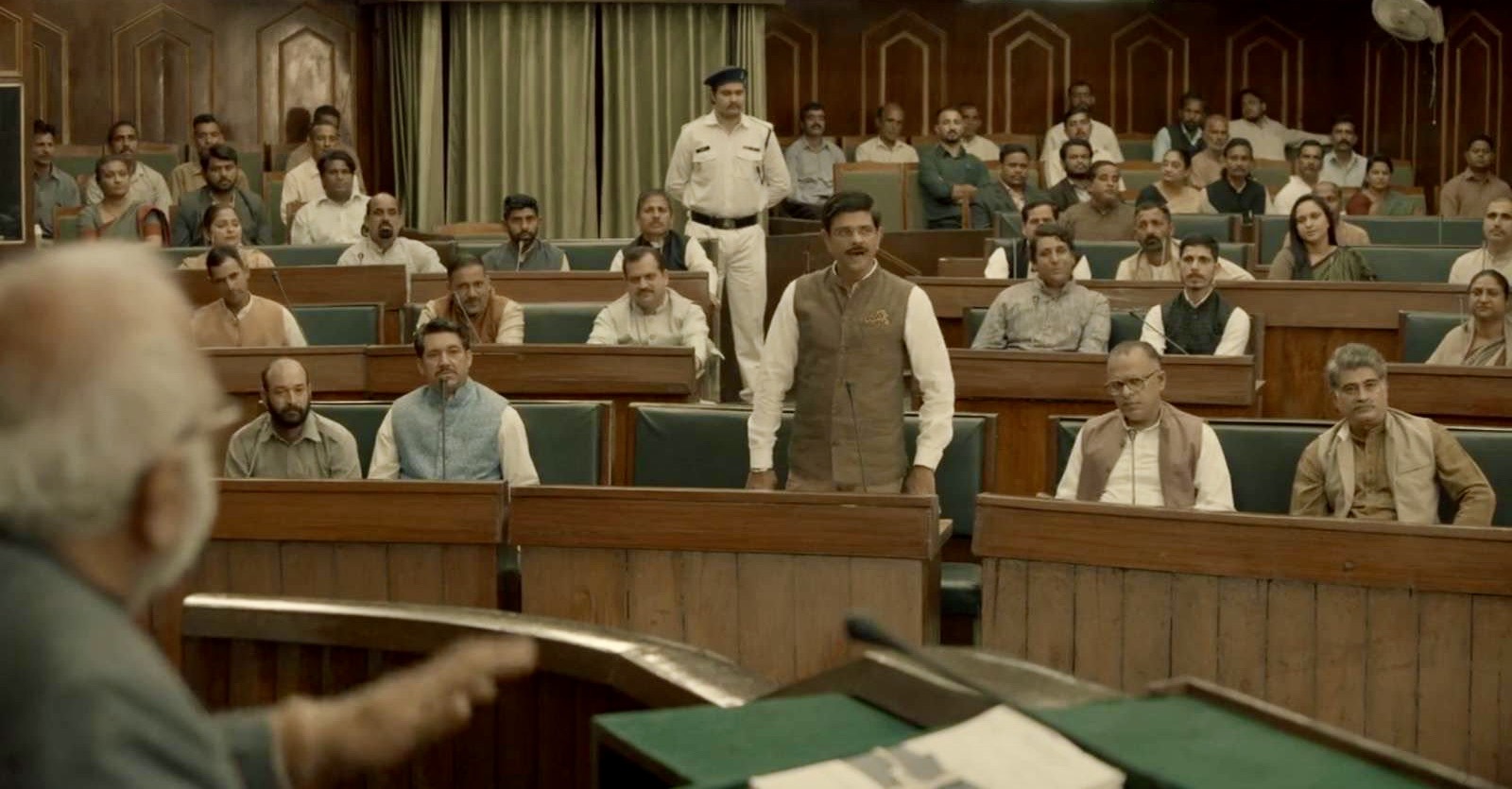The improved turnout in the Lok Sabha elections retained the mandate’s regional divide on Kashmir-Jammu lines, a trend not new to the region’s politics. While Jammu exhibited its trust in BJP, Kashmir’s political class survived fragmented with JKNC and Engineer Rasheed as the key gainers. This trend could make BJP a key player in assembly elections if and when they are held, reports Jahangir Sofi

Notwithstanding the ground-breaking pre-poll interventions and certain tactical moves ahead of voting, the just concluded Lok Sabha elections in Jammu and Kashmir are being seen as a fair exercise. Had it been unfair, it may have looked very difficult for a politician like Engineer Rasheed to emerge as a literal kingmaker if not the king from north Kashmir. Of the five Lok Sabha seats, JKNC and BJP retained two berths each as Engineer’s Awami Itehad Party wrested the fifth one.
The outcome of the Lok Sabha elections offers interesting insights into the future of the redrawn and recast assembly by the Jammu and Kashmir Reorganisation Act 2019. Anticipated to be the least empowered lawmaking body, this election outcome offers interesting insights into how the 90-berth assembly would look like right now. It also has fetched interesting data about how the parties performed after reviving political activity almost five years later.
The last Lok Sabha poll took place in 2019; months ahead of the reorganisation that bifurcated the erstwhile state into two federally governed Union Territories and a single-house assembly with 90 seats. By then all parties were intact. The issues started cropping up only after the election gave a decisive mandate to Narendra Modi-led BJP. Ladakh was also part of the erstwhile state and there were six berths of which three were taken by BJP and three by JKNC.

Party Vote Share
In 2019, Kashmir did not participate in elections the way it did in 2024. While it was 72.5 per cent in Jammu and 70.15 per cent in Udhampur, the participation was 14.43 per cent in Anantnag, 34.6 per cent in Baramulla and 8.98 per cent in Srinagar. It was more than 50 per cent in Kashmir constituencies this time. In 2019, only 3530883 valid votes were counted which is quite less in comparison to 5151193 which were recorded by the EVMs in 2024.
In 2019, BJP was the biggest gainer as far as vote share goes. It won three seats – Jammu, Udhampur and Ladakh and polled 1648041 votes, which makes 46.67 per cent of the overall votes cast in the exercise. Congress was the second major party that polled 1011527 votes, which was 28.38 per cent of the polled votes. JKNC polled 280356 (7.87 per cent), and PDP 84054 (3.38 per cent).
The vote share pattern shifted hugely in 2024. BJP took two seats of Udhampur and Jammu, JKNC Srinagar and Anantnag as the Baramulla seta was taken by AIP’s Engineer. This time again, the biggest vote gainer was the BJP but the numbers had tumbled. It took 1258664 votes, which constitutes only 24.43 per cent of the overall votes polled. Congress that gave the rightwing party stiff fight in Jammu seats polled 998793 votes making it 19.38 per cent of the vote share across Jammu and Kashmir.

The second biggest vote taker in 2024 was JKNC which polled 1147041 votes, which is 22.26 per cent of the overall votes polled across Jammu and Kashmir. PDP improved its tally to 435980 votes making 8.26 per cent of the overall vote share. It is worth mentioning here that JKNC and Congress are allies as part of the INDIA bloc set up under which Congress contested in Jammu and JKNC in Kashmir. They supported each other in the region they contested.
The surprise this time, however, was in north Kashmir where a key challenger to the belt, Sajad Lone compromised his 2019 tally. He polled 173239 votes making it 3.36 per cent of the overall votes polled across Jammu and Kashmir. In 2019, his share was 3.78 per cent. His arch-rival, Engineer, this time, polled 472481, which is 9.17 per cent of the votes of Jammu and Kashmir. Though he contested from only one berth, he took more votes than PDP, the last ruling party of the erstwhile state. BJP’s like-minded parties made a decent start but will take some more time to reach a stage where they can be considered for serious roles.
Assembly Wise Gains
The last assembly election was held in 2014. The assembly had 87 seats including four from Ladakh. JKPDP had 28 seats, BJP had 25, JKNC had 15, Congress, Peoples Conference had two, CPIM one and three were independents. This position had dramatically shifted in the 2019 Lok Sabha elections as the BJPDP government collapsed in 2018 summer.
In a 90-seat assembly, currently inactive, the Lok Sabha polling patterns of 2014 offer interesting insights. The JKNC has emerged a dominant political force across Jammu and Kashmir securing 34 of the 90 assembly segments. It contested in Kashmir only and in Jammu, it supported the Congress. Its massive gains in Kashmir underscore the party’s robust organisational structure and deep-rooted support base in the region. Notably, the party’s influence extends across all three parliamentary constituencies—Baramulla, Srinagar, and Anantnag-Rajouri.
Surprisingly, the Peoples Democratic Party (PDP) has managed a lead in only five seats. Sajad Gani Lone has been able to retain his home turf, Handwara and is one down in comparison to 2014 gains.

The major gainer is Engineer Rasheed, who contested from Baramulla lone and secured a lead in 14 of the 18 assembly segments. In 2019, he was the most polled contestant in five segments when he campaigned personally. This time he is in prison and has swept 14 assembly segments. On an individual basis, he is a major success in Kashmir politics with enormous growth potential.
On a Lok Sabha segment basis, the scenario is not dull either. Parties have gained in certain areas as some have simply faded if not vanished altogether.
Srinagar Constituency
The JKNC seemingly has succeeded in retaining its dominance, with the party leading in 16 out of 18 assembly segments, while the PDP managed to secure leads in only two segments—Rajpora and Pulwama. Notably, JKNC’s Aga Ruhullah Mehdi outperformed Syed Altaf Bukhari’s Apni Party in Chanapora, receiving 11,951 votes compared to Bukhari’s 3,101 votes. Chanpora, which existed as Amira Kadal in its earlier avatar, has been Bukhari’s home turf.

However, in the Pulwama and Rajpora assembly segments, PDP’s Waheed Parra has managed a lead in both constituencies. Apni party’s candidate, Mohammad Ashraf Mir, got the highest number of votes from the Ganderbal assembly segment, securing over 6,000 votes.
Baramulla Constituency
Baramulla, which was seen as JKNC’s key influence belt, has exhibited a shift with Budgam, Gurez, and Pattan assembly segments retained by the party. In Budgam, JKNC secured 30,259 votes, pushing Engineer Rashid to be the runner-up with 24,604 votes.
From the Pattan assembly seat, considered a bastion of Sajad Lone’s close confidant and Shia leader Imran Raza Ansari, Omar managed to secure a lead with 21,533 votes. Sajad’s PC received 17,124 votes, followed by Engineer Rashid who received 17,112 votes.

As per the data, Lone has managed to secure a lead in a single seat of Handwara with 26,275 votes, followed by Engineer Rashid who managed to secure 19,336 votes from that assembly segment. Handwara and Langate are close to each other and are with Lone and Engineer. In Langate, Lone is the No 2 and in Handwara it is Engineer at No 2 position.
Interestingly, of all 18 assembly segments in Baramulla’s Lok Sabha constituency, Engineer Rashid has managed to secure a win in 14 assembly segments, with over 42,000 votes in the Bandipora assembly segment, where NC and PC managed only 12,220 and 6530 votes respectively.
Anantnag-Rajouri Constituency
JKNC’s influence extends to the Anantnag-Rajouri constituency, where the party leads in 15 out of 18 assembly segments, while the PDP, which considers South Kashmir as its bastion, has managed only three seats in Anantnag, Anantnag West and Bijbehara assembly.

Notably, after the delimitation exercise, several assembly segments from the Pir Panjal range were added to the erstwhile Anantnag parliamentary constituency, thereby making it the Anantnag-Rajouri Lok Sabha seat.
At present the constituency comprises 18 Assembly segments, of which 11 fall in three districts of Anantnag, Kulgam and Shopian, and seven segments are from Rajouri and Anantnag districts.
PDP Decline
Leading in just five assembly segments across Kashmir, the PDP has witnessed a significant decline in the vote share, giving a stark contrast to its previous stronghold in South Kashmir.
Considered to be its traditional bastion—South Kashmir within the Anantnag-Rajouri constituency, the PDP managed to secure leads in only three segments—Anantnag, Anantnag West, and Bijbehara, with experts saying that the loss of ground in these areas suggests voter dissatisfaction or a shift in political allegiances. Party’s inability to secure more leads in Srinagar and Baramulla, highlights the challenges the erstwhile BJP ally faces in regaining its lost influence.

Part of the mess could be attributed to the party being deserted by a large chunk of leaders in the last five years. However, these leaders have not been able to perform well in the parties they landed in. Neither has Jammu and Kashmir Apni Party performed well nor has Sajad Lone’s Peoples Conference. Even Azad’s party seems to have lost in its own area of influence – Chenab Valley. This vote seemingly has been netted by the JKNC in Kashmir and Congress in Jammu.
BJP’s Retains Home Turf
In the Jammu region, the BJP has demonstrated a strong performance, particularly in Udhampur and Jammu parliamentary seats.
In Udhampur, BJP’s Dr Jitendra Singh led in 14 out of 18 assembly segments, securing 571,076 votes and recording his third consecutive victory. His opponent from the Congress party, Choudhary Lal Singh, managed to lead in only four segments, securing over 48,000 votes in the Banihal assembly segment where Dr Singh managed over 10,000 votes. Interestingly Congress has managed a lead in four assembly segments where the majority population is Muslim – Banihal, Bhaderwah, Inderwal and Doda. It barely managed to get a lead anywhere where non-Muslims are in the majority.

Notably, following the last delimitation, the Udhampur Lok Sabha constituency spans five districts – Udhampur, Kathua, Doda, Kishtwar and Ramban.
Similarly, in the Jammu parliamentary seat, BJP’s Jugal Kishore led in 15 assembly segments, further consolidating the party’s dominance in the region. The Congress party’s Raman Bhalla managed leads in only three segments – Gulabgarh, Suchetgarh and RS Pora. However, what was very visible this time was the stiff competition that Congress gave to the BJP.
The New Trends
The Lok Sabha election outcome offers certain quick trends. The JKNC’s performance suggests a resurgence and consolidation of its support base. This dominance could position NC as a critical player in future regional politics, particularly in upcoming assembly elections.
Most of JKNC’s gains are outcomes from the PDP decline in south Kashmir, an area which Omar once termed “a cancer for the party (JKNC”. The Mufti-led party is facing an existential crisis but the party has polled better in comparison to 2019. Party leaders see the 2019 Lok Sabha campaigning as an effort to revive the party.
The rise of independent candidate Engineer Rasheed in north Kashmir is indicative of the arrival of a new political force. His gains are the losses of all others. It includes JKNC, PDP and PC.
The new parties, seen as the BJP’s like-minded and friendlies may have to rediscover themselves to stay relevant to Kashmir. They have not performed well despite the space, time and resources at hand. Experts believe the difficulties the new political entities face in establishing themselves may push them to rediscover their politics.
BJP, however, stays entrenched in its key support base, the Dogra heartland. It is slightly down but not out. In the Jammu region, the party continues to remain the main political force, a status it has been having since 2014.
Whose Assembly
The Lok Sabha polling pattern offers the same hung house for the Jammu and Kashmir assembly as it existed in 2014. Had the numbers been for the 90-seat assembly, who would be in a position to form the government? Post reorganisation, anybody having 46 berths can rule Jammu and Kashmir. So who has this magic number?
Overall, JKNC has 34 berths. Its ally, Congress has 7 berths. PDP has only 5. BJP has 29 assembly seats and its ally, PC, has one seat. The remaining 14 seats are with Engineer Rasheed. So which combinations emerge on the basis of this data for a working and stable assembly in Jammu and Kashmir?
The top two parties from the two regions are NC and BJP. They can have a stable house with 63 seats. This combination reflects the mood of the region, envisages both faiths and gives both the regions their dues. This is almost the same basic situation that led to the making of the fateful BJPDP alliance in 2014.

The JKNC cannot form a government with its Congress ally. However, it can lead a simple majority government with the help of Congress, and the PDP. It can also bring in Engineer and form a majority government but the biggest problem it will have is that it will be mostly Muslim and mostly Kashmiri treasury bench excluding the popular Hindu vote.
BJP cannot rule Jammu and Kashmir for the lack of numbers. Its ally can add just a berth to reach to 30 level. PDP is unlikely to ‘rediscover the wheel’ and even if goes that way, it lacks enough numbers. For the very same reasons, JKNC will stay away. However, if an Engineer gets into an alliance, it has the potential of forming a weak government with the support of some defections.
These imaginary scenarios will look real and start haunting Jammu and Kashmir within days after the assembly election results will come out. On the orders of the Supreme Court, Jammu and Kashmir must have assembly elections by or before September 2024. Wait and watch the return of a hung house in which nominated members will play kingmakers. Kashmir for a long time will have coalition politics ruling the roost.














